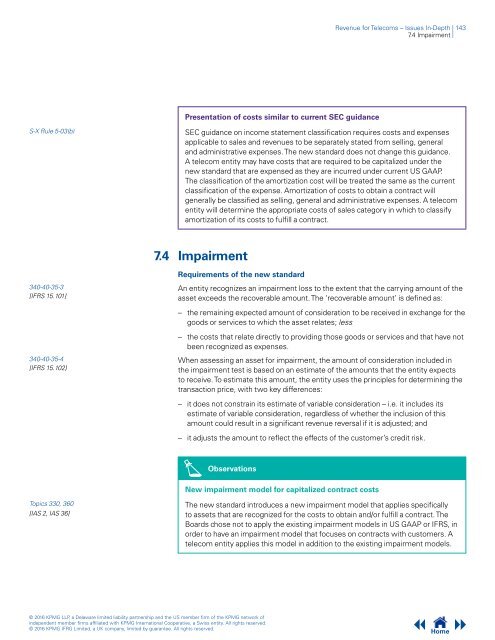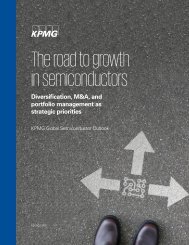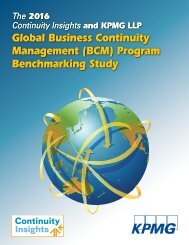Revenue for Telecoms
2cdncba
2cdncba
You also want an ePaper? Increase the reach of your titles
YUMPU automatically turns print PDFs into web optimized ePapers that Google loves.
<strong>Revenue</strong> <strong>for</strong> <strong>Telecoms</strong> – Issues In-Depth | 143<br />
7.4 Impairment |<br />
Presentation of costs similar to current SEC guidance<br />
S-X Rule 5-03(b)<br />
SEC guidance on income statement classification requires costs and expenses<br />
applicable to sales and revenues to be separately stated from selling, general<br />
and administrative expenses. The new standard does not change this guidance.<br />
A telecom entity may have costs that are required to be capitalized under the<br />
new standard that are expensed as they are incurred under current US GAAP.<br />
The classification of the amortization cost will be treated the same as the current<br />
classification of the expense. Amortization of costs to obtain a contract will<br />
generally be classified as selling, general and administrative expenses. A telecom<br />
entity will determine the appropriate costs of sales category in which to classify<br />
amortization of its costs to fulfill a contract.<br />
7.4 Impairment<br />
Requirements of the new standard<br />
340-40-35-3<br />
[IFRS 15.101]<br />
An entity recognizes an impairment loss to the extent that the carrying amount of the<br />
asset exceeds the recoverable amount. The ‘recoverable amount’ is defined as:<br />
– the remaining expected amount of consideration to be received in exchange <strong>for</strong> the<br />
goods or services to which the asset relates; less<br />
– the costs that relate directly to providing those goods or services and that have not<br />
been recognized as expenses.<br />
340-40-35-4<br />
[IFRS 15.102]<br />
When assessing an asset <strong>for</strong> impairment, the amount of consideration included in<br />
the impairment test is based on an estimate of the amounts that the entity expects<br />
to receive. To estimate this amount, the entity uses the principles <strong>for</strong> determining the<br />
transaction price, with two key differences:<br />
– it does not constrain its estimate of variable consideration – i.e. it includes its<br />
estimate of variable consideration, regardless of whether the inclusion of this<br />
amount could result in a significant revenue reversal if it is adjusted; and<br />
– it adjusts the amount to reflect the effects of the customer’s credit risk.<br />
Observations<br />
New impairment model <strong>for</strong> capitalized contract costs<br />
Topics 330, 360<br />
[IAS 2, IAS 36]<br />
The new standard introduces a new impairment model that applies specifically<br />
to assets that are recognized <strong>for</strong> the costs to obtain and/or fulfill a contract. The<br />
Boards chose not to apply the existing impairment models in US GAAP or IFRS, in<br />
order to have an impairment model that focuses on contracts with customers. A<br />
telecom entity applies this model in addition to the existing impairment models.<br />
© 2016 KPMG LLP, a Delaware limited liability partnership and the US member firm of the KPMG network of<br />
independent member firms affiliated with KPMG International Cooperative, a Swiss entity. All rights reserved.<br />
© 2016 KPMG IFRG Limited, a UK company, limited by guarantee. All rights reserved.<br />
Home







